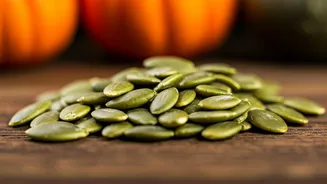Silent Dietary Hero
Fiber, often hailed as the unsung champion of our dietary needs, is currently experiencing a significant surge in popularity. Experts and health enthusiasts
alike are highlighting its importance, leading to its recognition as a major trend in 2025. This elevation in status is a direct result of increased understanding and awareness of the various benefits fiber provides. Unlike other nutrients that are often promoted, fiber silently works behind the scenes, playing a crucial role in maintaining overall health and wellness. This rise reflects a wider shift toward prioritizing fundamental aspects of nutrition that may have been overlooked, emphasizing the necessity of integrating more fiber into daily diets to achieve enduring wellness outcomes. The current emphasis on fiber is not merely a fad, but a recognition of its deep-rooted benefits.
Science and Satiety
The science that supports the popularity of fiber in the wellness landscape is extensive. One of the most significant aspects of fiber’s impact is its role in satiety. This means that fiber-rich foods help you feel fuller for longer. When fiber is consumed, it expands in the stomach, which sends signals to the brain that it is time to stop eating. This process is crucial in weight management, helping reduce overeating and promoting a healthy calorie intake. Fiber also interacts with hormones that regulate appetite, further enhancing its ability to control hunger. This combination of effects makes fiber a valuable ally for those looking to improve their eating habits and lifestyle. Furthermore, the slow digestion rate of fiber leads to a more stable release of energy, which means a steadier blood sugar level, avoiding energy crashes that are often associated with diets lacking adequate fiber.
Tradition Meets Trend
The rise of fiber as a key health trend brings together traditional dietary practices and contemporary wellness philosophies. The inclusion of fiber in diets is not a novel concept; it’s a time-tested approach rooted in ancient dietary habits. Across various cultures, whole, unprocessed foods that are naturally rich in fiber have been staples in traditional diets. What is changing is the recognition and explicit focus on this crucial nutrient in modern wellness trends. This shift indicates a return to the basics, emphasizing a more holistic understanding of health and nutrition. It shows that ancient wisdom and modern scientific findings are merging, creating a renewed appreciation for how fiber-rich foods can improve overall well-being. This convergence showcases fiber not only as a fad but a proven component of a sustained, balanced approach to health.
Making the Most
Integrating fiber into your daily life doesn't require complex schemes; it's about making conscious, consistent choices. Focusing on whole foods is one of the easiest ways to meet your fiber goals. Fruits, vegetables, legumes, and whole grains are naturally abundant in fiber. Start by making simple swaps, such as choosing whole-wheat bread over white bread or including more beans and lentils in your meals. Increasing your intake gradually will also help to prevent any digestive discomfort, allowing your body to adjust comfortably to the changes. Ensuring adequate water intake is also crucial, because it helps fiber function correctly, reducing potential digestive side effects. Making informed choices about foods, while pairing them with a healthy lifestyle, is the key to effectively using fiber as a foundation for better wellness.
Fad to Foundation
The shift towards fiber is a fundamental change, moving from being viewed as a passing trend to an essential element of a healthy lifestyle. The longevity of fiber's benefits, backed by scientific consensus, solidifies its position as a cornerstone of wellness. This shift away from trendy diets and towards fiber underscores the long-term impact of adopting simple, science-backed dietary choices. As understanding of nutrition continues to grow, and awareness about the necessity of fiber for overall wellness increases, its lasting impact becomes clear. By building a solid diet foundation based on fiber-rich whole foods, people are well-positioned to maintain their health and vitality. This shift highlights a deeper appreciation for the role of balanced diets in overall health.











